NMR spectrometer
ECZ Luminous™
JNM-ECZL series
FT NMR
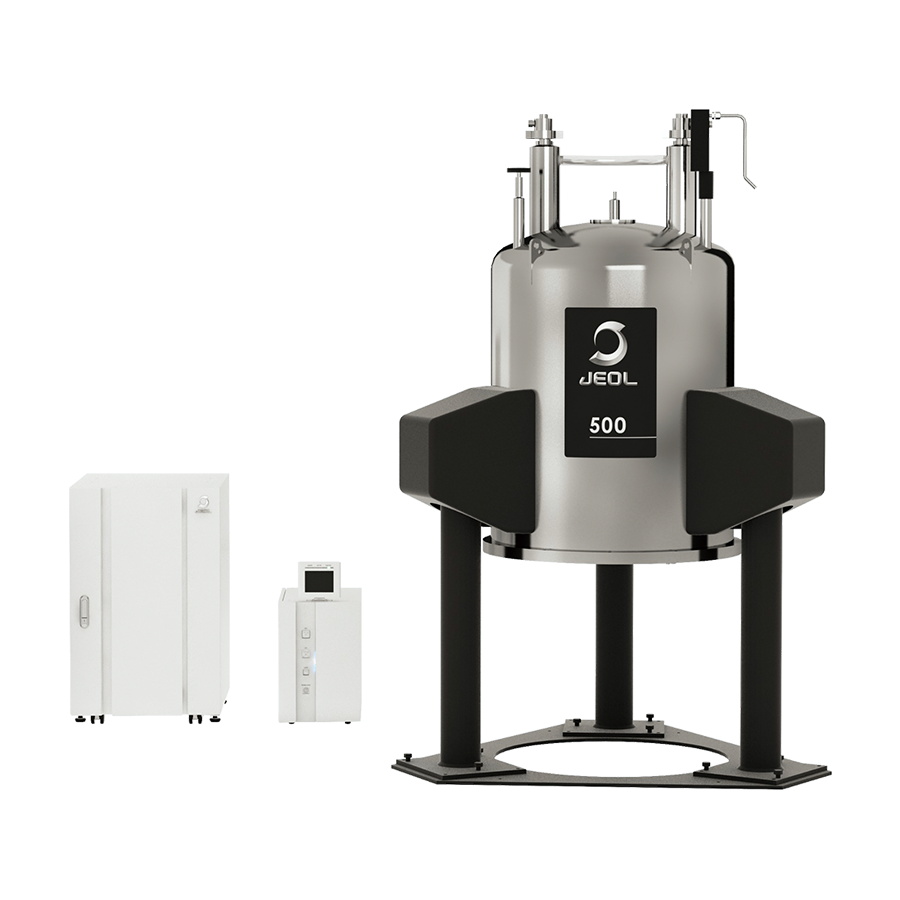
The ECZ Luminous™ (JNM-ECZL series) is an FT NMR spectrometer equipped with state-of-the-art digital and high frequency technology. The highly integrated Smart Transceiver System, a high-speed, high-precision digital high-frequency control circuit, enables further miniaturization and high reliability of the spectrometer. It is capable of high-field and solid-state NMR measurements while maintaining the size of a conventional low-field solution NMR system.
The new Multi Frequency Drive System enables multi-resonance measurements in a standard configuration, providing a wider range of solutions. We hope you enjoy the world of ECZ Luminous™.
Features
STS (Smart Tranceiver System)
The ECZ Luminous inherits the STS (Smart Transceiver System) digital high integration and high frequency technology used in the previous ECZ series. The sequencer, DDS (Direct Digital Synthesizer), FSU (Frequency Synthesizer Unit), transmitter, receiver, acquisition unit, and gate control unit are all integrated on a single RF (Radio Frequency) transmitter/receiver board. Two 4-frequency source units (one each for HF and LF) and one receiver are configured on a single RF transmitter/receiver board. The standard configuration has a total of eight frequency sources and one receiver. The ECZ Luminous can be expanded to four RF transmitter/receiver boards to support up to 8 nuclei, 32-frequency sources and four receivers. In addition, the transmitter/receiver system in the STS is a hybrid of direct conversion oversampling and superheterodyne undersampling technologies, which allows for flexible frequency conversion and efficient and optimal signal transmission/reception depending on the target frequency.

Highly Precise Digital Control
The ECZ Luminous sequencer provides fast control of frequency, phase and amplitude modulation with a minimum control time resolution of 5 ns. In addition, the ECZ Luminous is equipped with a digital quadrature detection (DQD) circuit that enables dynamic frequency and phase modulation synchronously or asynchronously in both the transmitter and receiver systems. This enables signal processing with high functionality and a high degree of freedom, and is expected to be applied to cutting-edge solid- state NMR measurements, which have become increasingly important in recent years. In addition, a unique streaming transfer technology is used for the sequence memory, which has a quasi-infinite memory capacity. At the same time, the same control performance is provided for various gating and synchronization operations with external systems. These high-speed, high-accuracy digital control technologies provide the best solution for a wide variety of requirements to realize a wide range of advanced NMR measurements. In case that observe nucleus has a wide range of chemical shifts, such as 19F, some signals may not be observed due to the limited bandwidth of conventional rectangular pulses. In such a case, high-speed phase modulation pulses excite much wider ranges and are very useful.
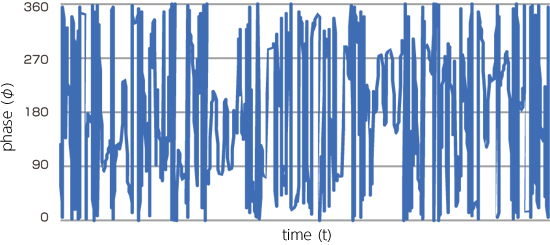
PM-BEBOP180 Phase modulated pulse
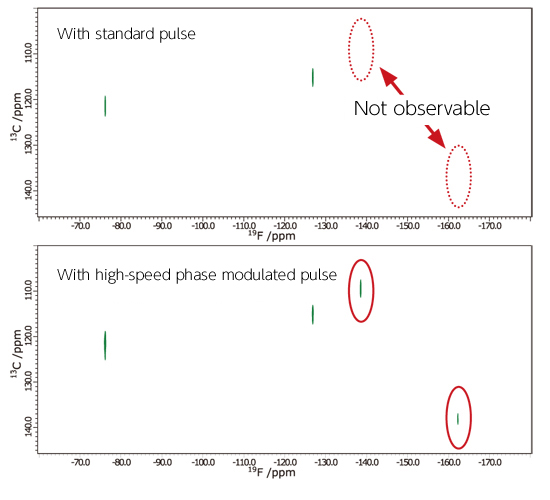
1H decoupled 19F-13C HMQC 2D spectrum
Wide Dynamic Range
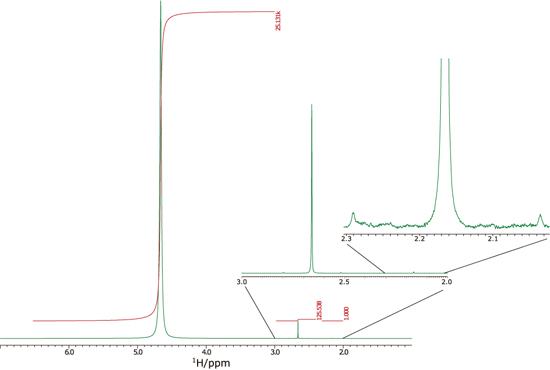
A small 13C satellite signal (about 4.6 millionths) of the acetone signal in a mixed sample: H2O:DMSO:Acetone=25131:125:1 (about 10 % D2O) is clearly visible.
The receivers in the ECZ Luminous are sequencer controlled and can be independently and dynamically frequency and phase modulated for sampling. DQD (Digital Quadrature Detection) with 16-bit 100Msps high-speed A/D conversion not only improves the effective dynamic range against quantization noise by high rate oversampling, but also reduces unwanted signals such as intermodulation distortions (IMDs) to the utmost limit. The digital filter is optimized for NMR and ensures quantitative performance over a wide bandwidth.
The high dynamic range of ECZ Luminous allows you to clearly capture small signals in NMR spectra, including large signals such as solvent.
Low-noise Wideband SiGe Preamplifier
Newly developed low-noise wideband SiGe preamplifier improves sensitivity. In combination with ROYALPROBE™ / ROYALPROBE™ HFX, the sensitivity has been improved by about 10 %.
Digital Lock Circuit for Stability
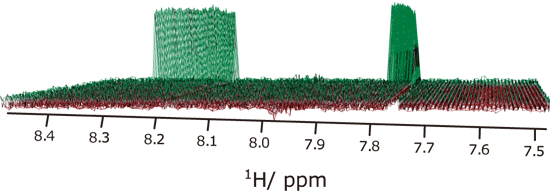
Stability test data over 12 hours
1D 1H-13C HMQC needs to observe the correlated signal (left and right signals) of 13C-coupled 1H, which has an existence ratio of about 1 %, and eliminate the directly observed signal of 12C-coupled 1H, which has an existence ratio of about 99 %. This is why it is used to check stability.
The ECZ Luminous uses STS technology to digitally control the 2H lock with high speed and high accuracy. The excellent response control of the digital feedback circuit suppresses the effects of magnetic field fluctuations more efficiently. The high speed and high precision digital lock feedback function enables stable and long time measurement.
MFDS (Multi Frequency Drive System)
We have developed a new Multi Frequency Drive System. Expanding on the design concept of the HFX system, the ECZ Luminous system enables multiple resonance measurements using triple-resonance probes such as HCN and HCX probes on a standard two-channel spectrometer. Conventional triple-resonance measurements, which require pulse irradiation of three or more nuclides with different frequencies, traditionally require costly expansion of channels and installation space. With ECZ Luminous, the multi-sequencer architecture with STS and the newly-developed MFDS (Multi Frequency Drive System) enable triple-resonance measurements with a two-channel spectrometer. It opens the door of multiple-resonance experiments to more users.
5 mm HCN probe configuration with ECZ Luminous System
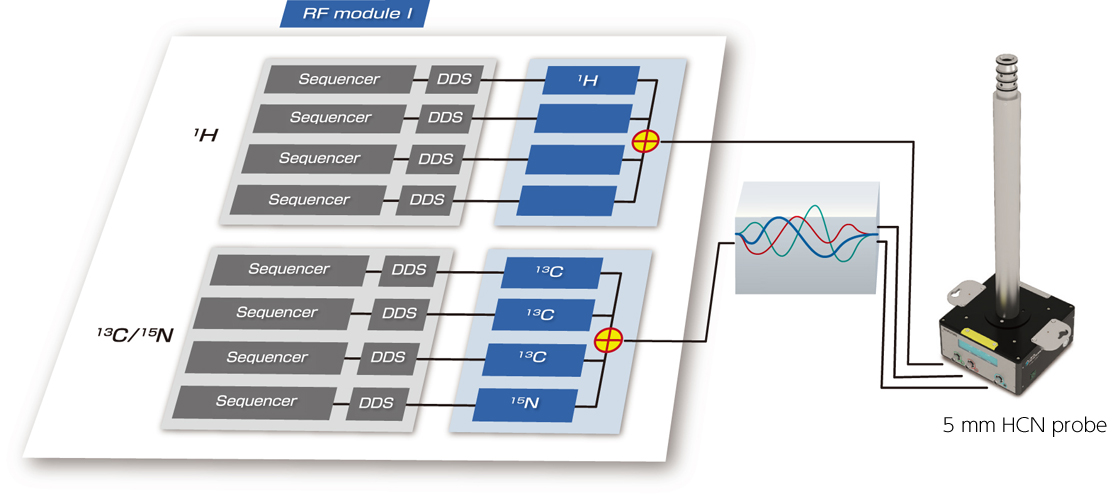
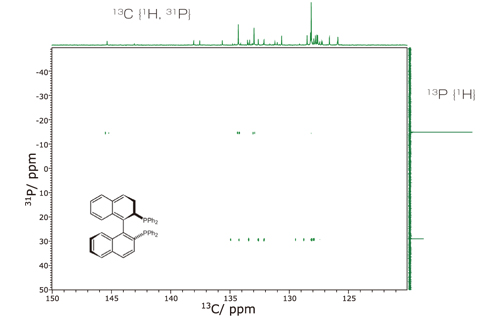
HCP triple resonance experiment performed by 2 channel spectrometer
(13C-31P {1H} correlation)
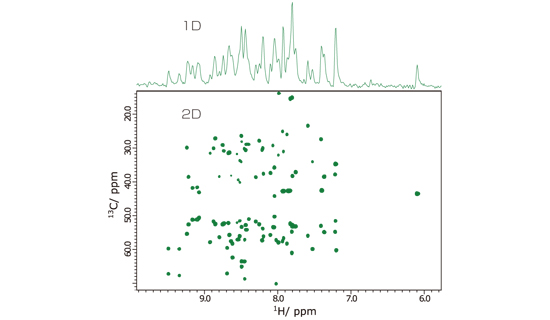
HCN triple resonance experiment performed by 2 channel spectrometer
(CBCACONH)
Easy Shimming
The ECZ Luminous includes a digital matrix shim system (25 shims) for 400 MHz, and a Lagrange shim system (44 shims) for higher-field instruments requiring higher resolution.
Gradient shimming is a technique that uses a magnetic field gradients to measure the magnetic field distribution in the sample space, and then immediately calculate and apply the appropriate shim values. Gradient shimming allows rapid and automatic optimization of the shims, even for samples with small volumes or different solvent systems, to obtain NMR spectra with the highest resolution.
ECZ Luminous can perform gradient shimming by observing nuclei other than 2H (D) and 1H nuclei. For example, if you want to perform NMR measurements on a sample that is only soluble in fluorinated solvents, you can adjust the resolution by gradient shimming on 19F. The accelerated 3D gradient shimming (3 axes) measures the 3D magnetic field map of the sample and calculates and applies the optimal shim value for the radial terms, making it easy to optimize resolution in various conditions.
Gradient shimming (2H)
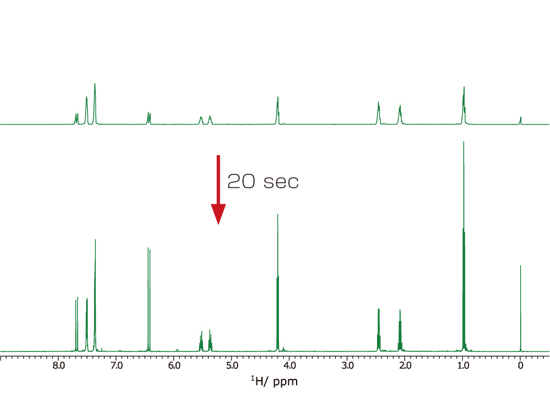
Spectra before and after resolution adjustment by gradient shim. The resolution is improved by 20 seconds
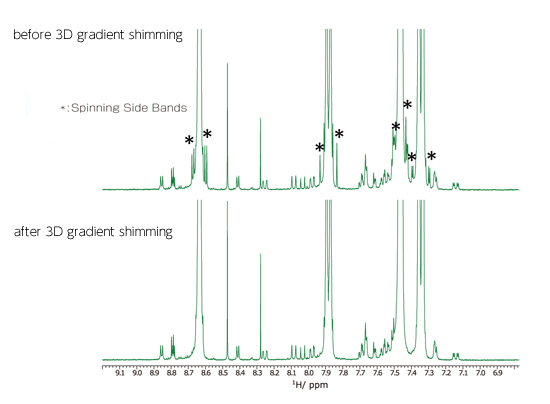
Poorly adjusted radial shims under sample rotation (top) and corrected with 3D gradient shimming (bottom)
Gradient shimming (19F)
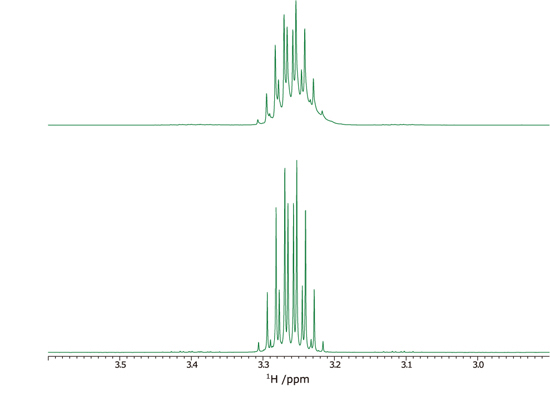
You can select the 19F signal and use it to adjust the resolution with gradient shimming as well as the 2H signal.
Link
Newsrelease
ECZ Luminous, a Brand-new High-resolution Nuclear Magnetic Resonance System, is now available
Specifications
More compact spectrometer
ECZ Luminous has achieved a significant reduction in size while enhancing the performance of the spectrometer. The volume of the R series has been reduced to about 1/3 of that of the conventional equivalent.
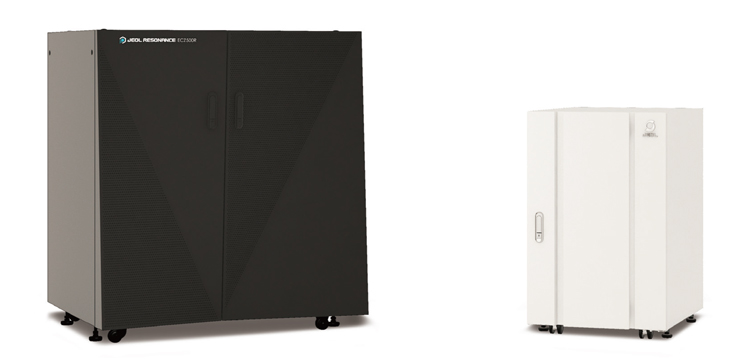
Size comparison with conventional models with equivalent performance
| JNM-ECZL G series | JNM-ECZL R series | JNM-ECZL S series | |
|---|---|---|---|
| Frequency | 400 MHz - 1.3 GHz | 400 MHz - 600 MHz | 400 MHz |
| Sample type | Solution / Solid | Solution / Solid | Solution |
| Number of channels | 2 (standard) | 2 | 2 |
| Power amplifier | 100 W (standard) | 100 W | 50 W |
| High frequency | 200/500/1000 W (as option) | ||
| Power amplifier | 300 W (standard) | 300 W | 150 W |
| Low frequency | 500/1000/2000 W (as optiona) | ||
| Magnetic field gradient amplifier | 10 A (standard) | 10 A | 10 A |
| 30/50 A (as option) | |||
| Console size W×D×H | 600×855×1,279 mm | 536×730×855 mm | 536×730×855 mm |
Application
Application JNM-ECZL
Application of diffusion filter - suppression of signal of small molecule
Gallery
LINE UP
ECZ Luminous is available in three different models to meet a wide variety of user. All models feature high performance digital high frequency technology and user-friendly Delta software.
JNM-ECZL G series
ECZL G series is a flagship model that supports diversified, cutting-edge applications. The footprint of the spectrometer has been reduced to less than 60% of ECZR, while maintaining the expandability needed to support a wide range of applications. It is flexible in terms of expansion, with support for three or more channels, high-power amplifiers, and high-output magnetic field gradients, allowing for future functional expansion even when installed in the minimum configuration. It is an adaptable FT-NMR system that can respond to changes in user applications and the introduction of the latest applications.
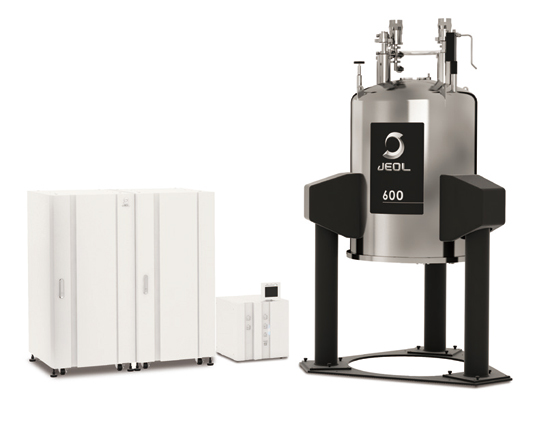
Dual rack configuration
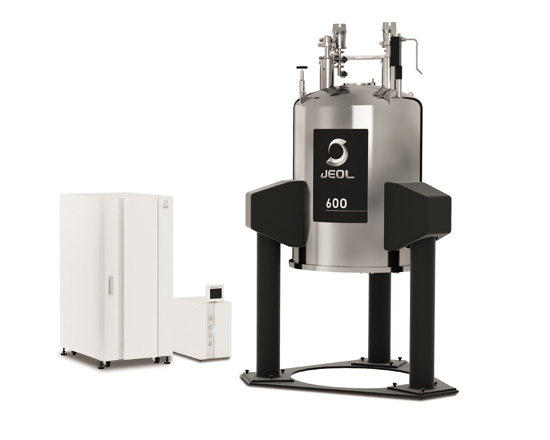
JNM-ECZL R series
ECZL R series is a compact spectrometer that is compatible with magnetic fields of up to 600 MHz. The footprint is less than 50% of that of ECZR, and it can also be used for solid-state measurements.
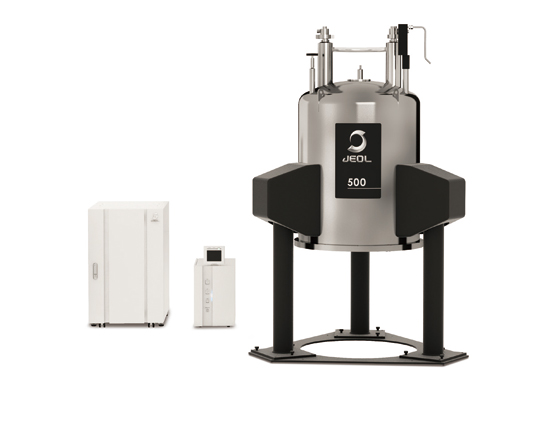
JNM-ECZL S series
ECZL S series is an entry-level model dedicated to 400 MHz solutions-state NMR while incorporating the high performance digital high frequency technology of the ECZL series.
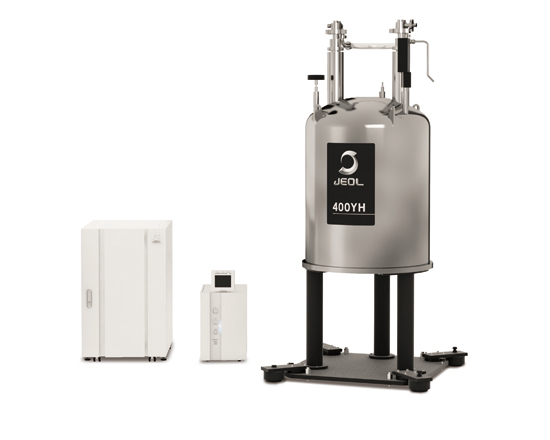
Related Products
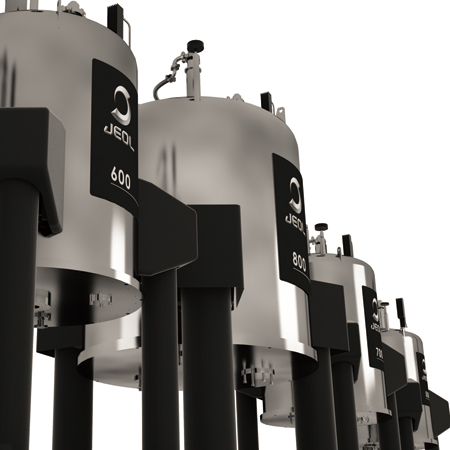
Superconducting magnets (SCM)
Space-saving design with a compact superconducting magnet.
Greater flexibility of installation layout of the instrument is possible with the new compact magnets that have a smaller stray magnetic field.
More Info
Are you a medical professional or personnel engaged in medical care?
No
Please be reminded that these pages are not intended to provide the general public with information about the products.
